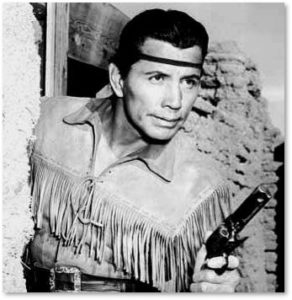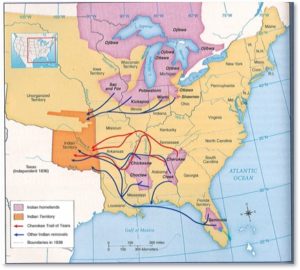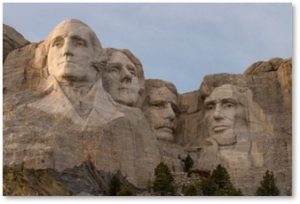Last week I wrote a blog post about the black history that our school systems ignore. This week, it’s time to address the First Nations history we never learned in class. It’s not a pretty picture.
The First Nations on TV Westerns
The white, Leave It to Beaver, version of American History in our textbooks treated the indigenous people tangentially, if at all. We saw the friendly Squanto at Thanksgiving, the Indian head on a nickel, and maybe heard about General Custer. We knew that the settlers and colonists fought the native people, but with no specifics as to whom, where, or when. Or why.
 In fact, most of what my generation learned about the First Nations came from television. The fifties and sixties were the decades when every show on TV was a western—and in the disputes between cowboys and Indians, the cowboys always won.
In fact, most of what my generation learned about the First Nations came from television. The fifties and sixties were the decades when every show on TV was a western—and in the disputes between cowboys and Indians, the cowboys always won.
Villains in the seemingly endless series of western dramas often proclaimed, “The only good Indian is a dead Indian.” The only victory the tribes got was beating George Custer at the Battle of the Little Big Horn. In this unofficial history, the First Nations were the Bad Guys, the enemy, stupid, or drunks—objects of hatred or derision. Even the Lone Ranger’s sidekick was named Tonto, which means “fool” in Spanish. (At least they hired a “real Indian” in Jay Silverheels.)
The Dark History
The real history, the one we never talked about in class, is a lot darker. In this history, white settlers murdered Indians by gun and by knife, through starvation and biological warfare. We took their land away because we wanted it for farms or towns, because it had oil or gas underneath it, or because we wanted to put roads and railroads (and pipelines) through it.
Instead of the rich lands on which they had always lived—and lived well—we gave them rocky, infertile soil—and made them march hundreds or thousands of miles to reach it. Even then, if some prospector later struck gold or a driller struck oil nearby, we reneged on the treaty the U.S. government had signed and took back the land we had given them.
The Massacre List
The list of massacres, when white troops and civilians butchered Indian men, women and children, is distressingly long and brutal. If you have the stomach, you can read the whole list here.
While researching this post, I discovered the semantics by which our history differentiated whites attacking Indians from the opposite. Indians attacking white settlements were called “massacres,” while white assaults were called “battles” or “raids.” That gave white men the moral authority to protect and defend while turning the indigenous people into barbarians.
To be fair, the First Nations were not peace-loving flower children, as reader David Hunt noted. They warred against one another, stole horses and women, took slaves whom they treated brutally, and measured a warrior’s courage by how well he stood up to being tortured to death. They might have done better against the Europeans had they been able to put aside these tribal hostilities and unite in their opposition.
A Few Offenses Against the First Nations
Here are just a few of the offenses that never made it into a formal school curriculum.
-
Christopher Columbus:
One of the worst offenders has been in the news lately, although he’s been dead for 514 years. Textbooks tell us only that he “discovered” America, a country already inhabited by the Taino, Arawak and Lucayan people. In his career as an “explorer,” Columbus committed many heinous crimes. He murdered approximately eight million red and brown people, raped and tortured others, enslaved thousands, and robbed them of millions of acres of land.
Unfortunately, Columbus also stands as a symbol of pride for Italian-Americans, who have put up statues of him and defend his place in history. The outcome of this controversy is in full swing right now and the ending is still up for grabs.
-
Andrew Jackson and the Trail of Tears:
American history teaches us that the seventh President was a war hero who led American forces to victory in the Battle of New Orleans during the War of 1812. Fair enough. He was also a slave owner who supported the extension of slavery into the western territories and an “Indian Fighter” who slaughtered the Creek tribes..
More egregious, though, is his record regarding the native people of the South. White settlers coveted valuable Indian land in parts of Georgia, Alabama, North Carolina, Florida and Tennessee. They wanted to make their fortunes on it by growing cotton and they didn’t much care how they got it.
Advocating “Indian removal,” President Jackson ignored a Supreme Court ruling that granted sovereignty to the tribes, and the Indian Removal Act of 1830 (which he had signed) saying that the native nations could not be coerced into giving up their land.
Under threat of invasion by the U.S. Army, the Choctaw Indians were driven from their land on foot, some in chains, and without food or supplies. Next came the Creeks and then the Cherokee. Men, women and children marched long distances to the new “Indian Territory,” in what is now Oklahoma, dying by the thousands along the way. The Trail of Tears is over 5,043 miles long.
-
King Philip’s War
This 14-month rebellion was led by the Wampanoag Chief Metacom, also known as Philip or King Philip. The underlying cause of the war was the colonists unrelenting desire for more and more land, but the immediate spark was the execution of three of Metacom’s men by the colonists. The war took place in southern New England from 1675 to 1676. It was the last-ditch effort for a tribal coalition to deny English authority and stop their settlement on their native lands.
King Philip’s War left several hundred colonists dead and dozens of English settlements destroyed or heavily damaged. The tribes suffered a worse fate however. Thousands of Indians were killed, wounded or captured and sold into slavery or indentured servitude. The war decimated the Narragansett, Wampanoag, Pocasset and many smaller tribes. It also mostly ended Indian resistance in southern New England, paving the way for additional English settlements.
-
The Massachusetts State Flag
 To this day, the state flag of Massachusetts depicts a Native American drawn in gold, a bow in one hand, an arrow in the other — its point turned down to signify peacefulness. Above him a disembodied, muscular arm brandishes a broadsword. And around both is a Latin motto which translates to: “By the sword we seek peace, but peace under liberty.” It signals oppression to the descendants to those who fought the British colonists for control of their ancestral lands.
To this day, the state flag of Massachusetts depicts a Native American drawn in gold, a bow in one hand, an arrow in the other — its point turned down to signify peacefulness. Above him a disembodied, muscular arm brandishes a broadsword. And around both is a Latin motto which translates to: “By the sword we seek peace, but peace under liberty.” It signals oppression to the descendants to those who fought the British colonists for control of their ancestral lands.
Our Continuing Assault on the First Nations
It would be nice to think that all this bad history is behind us, that we know better now, and treat the original owners of this land with dignity and respect. If only.
-
Right now, President Trump is planning a big Independence Day celebration at Mount Rushmore with fireworks. The Oglala Sioux tribe, on whose sovereign land this monument to white men was built, oppose this event, not least because of the risk of setting fire to very dry land. The president’s staff did not ask the tribe’s permission or even have the courtesy to communicate with them during the planning.
- The U.S. Army Corps of Engineers put the Dakota Access Pipeline across The Standing Rock Sioux Tribe’s land in 2016 over the tribe’s firm opposition. The pipeline has ruptured and leaked multiple times, spilling hundreds of thousands of gallons of dirty oil onto their sacred ground and threatening their water supply.
- In February of this year, the Trump administration started blowing up the ancestral graves of the Tohono O’odham tribe to building the border wall. The graves were located in what is now the Organ Pipe Cactus National Monument and the government did not contact the tribe before beginning demolition. President Trump waived the Native American Graves Protection and Repatriation Act to allow this.
To be clear, the bellicose nature of some First Nations tribes does not justify their slaughter, pillage, rape, theft and enslavement by European invaders. My larger point—and I do have one—is that we never learned about the Indian tribes in school., much less our brutal treatment of them. The names of Wounded Knee, Washita, Bear River, Sand Creek and many, many others ring no bells with us.
Somerset and the Wampanoag
I grew up in Somerset, MA, which was one of Chief Metacom’s principal villages. It had good hunting land, fish and shellfish in the Taunton River, and arable fields for growing squash and corn. The Wampanoag tribe refused multiple offers by the English to purchase it because it was so valuable to them.
Did we learn anything about the Wampanoag history of Somerset in school? Did we go on field trips to shell mounds or create little dioramas of a Wampanoag village? Did we discover the cause of King Philip’s War and what happened to Chief Metacom when he lost? We did not.
George Santayana famously said, “Those who do not learn history are doomed to repeat it.” What happens when you never learn the history in the first place?
I think that’s happening right now.






So let’s also understand two things:
The natives here before Europeans every showed up were no charmers, nor were they “noble savages” living in harmony with each other and nature. One example article:
TABOO TRUTHS ABOUT THE COMANCHE
https://archives.frontpagemag.com/fpm/taboo-truths-about-comanche-danusha-v-goska/
Tribes warred, took slaves, and committed horrific deeds well before Columbus ever arrived. And after.
Evidence of world’s biggest child sacrifice discovered
https://www.cbsnews.com/news/biggest-child-sacrifice-evidence-archaeologists-national-geographic-peru-chimu/
And conduct a “thought experiment” – had the technological advantage been the other way, do you TRULY BELIEVE that they’d have done any differently to Europe?
All of those things are irrelevant to the subject of my post, David. We don’t learn about them — for better or for worse. And we don’t learn about how the Europeans treated them when they conquered the tribes. As I said in my post, their brutality did not justify our own brutality.
OK. Had Europeans not arrived do you believe they’d now be peaceful?
You think that war, brutality, rape, pillage, theft and destruction are civilizing forces that create peace? But again, the topic is that we don’t know the history — for better or worse.